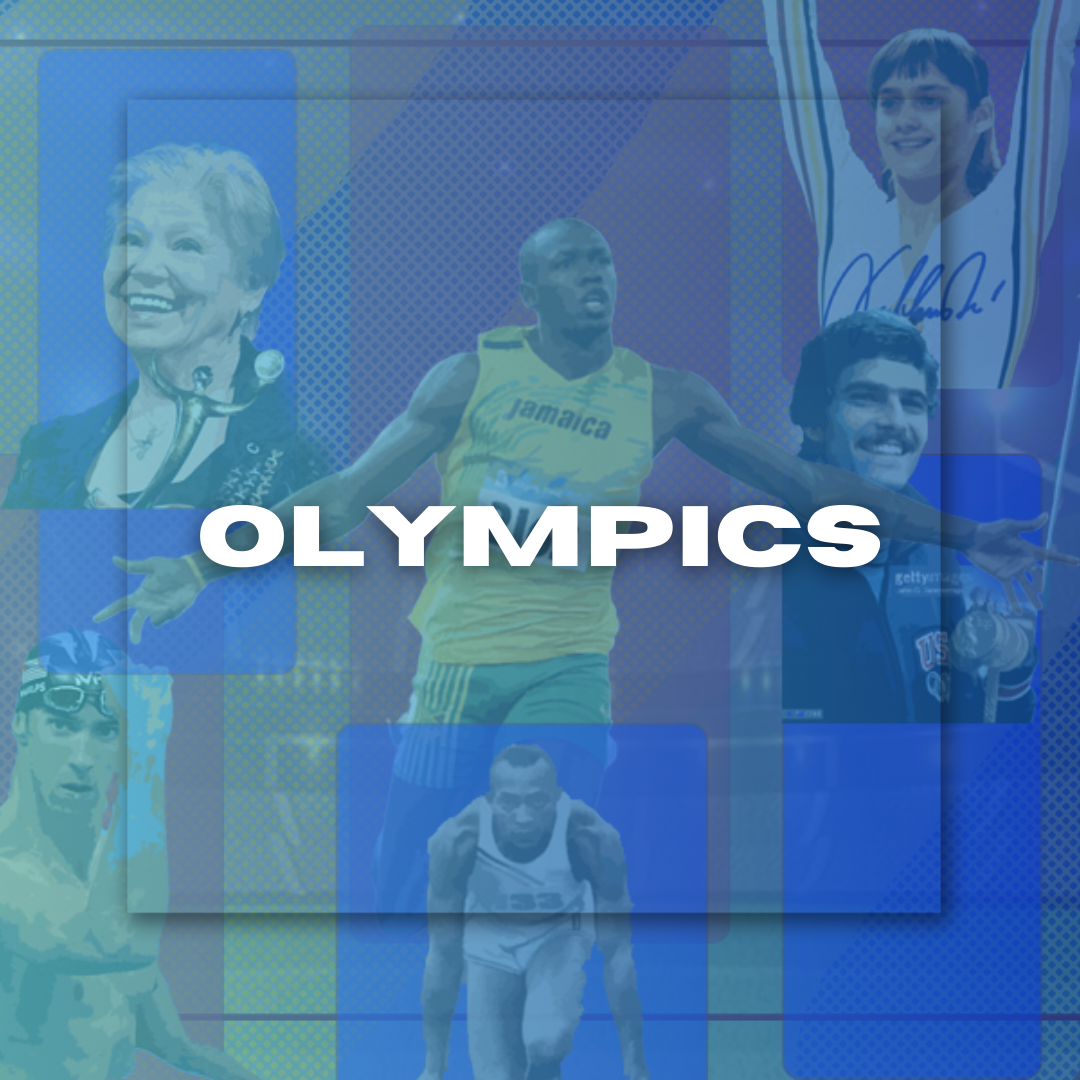
How Many Olympic Track and Field Events are There?
By Jayson Panganiban July 25, 2024 07:08
The Olympic Games and track meets have always gone hand in hand. From the electric burst of speed to that long jump and pole vault performance, athletics has been entranced for over a century since its inception during the revival period of the modern Olympics in 1896. Through the years, both the number and kind of track and field events have changed to suit honing or refutation developed out of your world's most favored exercise.
Here, Fan Arch presents an in-depth guide to the entire Olympic track and field line-up, including its history, regulations, and specifics.
The Sprints
The sprinting events of athletics have had a spot in the Olympics since its earliest modern form in 1896. Since its inaugural edition, the 100m, 200m, and 400m have been mainstays on the track program, explosive power in action from most of the world's fastest humans.
100m
The 100 meters is often the most highly anticipated event in track and field, celebrated as the ultimate test of raw speed. It's the shortest outdoor sprint, a straight dash from start to finish, where racers compete to be the fastest over a distance of 100 meters. This event demands explosive power right off the blocks, exceptional acceleration, and impeccable form to maintain top speeds. The world's fastest athletes complete the 100 meters in under 10 seconds, making it a breathtaking spectacle.
200m
The 200 meters combines elements of speed and endurance, testing athletes' ability to maintain their acceleration around a curve and into the straightaway to the finish line. The race starts on a stagger to ensure each runner covers the same distance, with athletes needing to negotiate the bend effectively, balancing speed with the technical skill of curve running. This event calls for a blend of explosive start, speed endurance, and the ability to decelerate less than competitors in the closing stages.
400m
Dubbed as one of the most challenging sprinting events, the 400 meters is a full lap around the standard outdoor track. It requires a mixture of speed, strategic pacing, and endurance. Athletes must carefully distribute their energy throughout the race, starting fast, settling into a rhythm, and having the strength to kick powerfully in the final stretch. The 400 meters is a true test of an athlete's speed endurance, demanding both the rapid pace of a sprint and the stamina to sustain that speed over a quarter of a mile.
Middle and Long Distance Races
Although sprints are a pure measure of speed, middle and long-distance races fall into their own category due to the other physical and mental demands on competitors.
800m
The 800m is the perfect race for versatile runners as it combines speed and endurance. Runners have to go out fast and try not only to hold on but also maneuver for position at the pace before finally making a hard last-lap sprint. That mark stands at 1:40.31, and David Rudisha set it in the last Olympics in London (2012).
1500m
The metric mile, or 1500m, is the same as a full distance but faster. In order to finish well, competitors need to balance conserving energy with making moves not only at the correct time but also in such a way that they will be positioned for an excellent result later on. Hicham El Guerrouj's 3:26.00 from the Rome Diamond League meeting in June 1998 still stands as the world record time for that event to this day.
5000m and 10,000m
It is the longest track race at the Olympics. They require sustained endurance, as runners have to maintain a fast speed for 12.5 and 25 laps of the track, respectively. The respective world records are 12:35.36 for the 5000m which was set by Ugada's Joshua Cheptegei in 2020, and 26.11.00 for the 10,000m by Ethiopea's Kenenisa Bekele in 2005.
Marathon
Originating from the ancient Greek legend of Pheidippides, the marathon is a 26.2-mile course that is one of the most physically demanding sports in human existence. Runners run 42.195 kilometers or flog the entire distance from start to finish, enduring hot and humid weather conditions due to climate change or pushing their physical boundaries without a break at all.
Hurdles
The hurdles are speed, balance, and stride length. Athletes race over an assigned number of barriers (hurdles) at which they have been placed.
110m hurdles (Men) and 100m hurdles (Women)
The men's 110m hurdles and women's 100m hurdles are the legacy events of the Olympics. The athletes must navigate 10 barriers, separated by a distance of either 9.14 meters (men) or 8.50 meters (women), at maximum velocity with as little rhythm disruption as possible.
400m Hurdles
It may be regarded as among the most difficult events to master because it's a true endurance race requiring competitors to clear ten barriers spread out over 35 meters while holding top speed on an entire lap. The current world records are 45.94s by Karsten Warholm in 2021 and 51.46s by Sydney McLaughlin in 2022.
Jumps
The jumping events reveal the extreme physical capabilities and strength of Olympic athletes.
High Jump
As the name suggests, high jumpers must clear a horizontal bar placed at ever-increasing heights to determine the victor. The current world record is 2.45 meters by Mutaz Essa Barshim in 2021.
Pole Vault
A pole vault is an exciting event where strength, agility, and technique collide. An athlete sprints down a runway and swings themselves up over an elevated bar. The current men's world record is 6.21 meters by Armand Duplantis in 2022, while the women's record sits at 6.15 meters tallied by Sandi Morris.
Long Jump and Triple Jump
In the long and triple jumps, athletes launch themselves as far from a takeoff point as they can, jumping into sand-filled pits. The long jump is even simpler than that pure horizontal distance, and the triple jump has a hop, step, and a final jump. World records are 8.95 meters for the long jump by Mike Powell, 1991, and 18.58 meters for the triple jump by Jonathan Edwards, 1995.
Throws
The throwing events demonstrate the strength and skills of Olympic athletes in their most pure form.
Shot Put
A heavy metal ball, the "shot," is thrown as far as possible into a marked sector. The line is that the athlete may not throw and let their elbow drop below shoulder level. The world records are currently held by Ryan Crouser, with a throw of 23.37 meters (76 ft 8 in) for the men, and Gong Lijiao, who tallied a distance of over 22.70m (74 ft 5) for the women's record.
Discus Throw
The discus throw, in athletics, was part of the original modern Olympic Games. The discus must be held and controlled during the entire throw as it may only be measured from the point of impact at release to first contact with the ground. The current world records are 74.08m, thrown by men Daniel Stahl in 2021 and 71.70m for women Valarie Allman in 2022.
Javelin Throw
Athletes will throw a long, spear-like implement in an attempt to achieve the greatest distance while it lands tip-first within a marked area. Good techniques, such as a strong run-up and proper release, are necessary to optimize distance.
Hammer Throw
In the hamper throw event, competitors use a heavy metal ball and swing it on the end of a long handle before releasing it to break in maximum distance. They need to keep it together throughout this spinning action before the release. Pavel Frydeck 2021 and Anita Wlodarczyk 2016 are the current world record holders for men (86.23m) and women (78.49m), respectively.
Combined Events
Heptathlon (Women)
Seven lengthy events, the heptathlon remains exclusively for women and consists of the high jump, 200m long jump, javelin, throw, shot put, and 100-meter hurdles. The competition format rewards points for performances in each event, with scores calculated based on tables of age-standard performance. The athlete accumulating the most points across all seven events is declared the winner. The variety of events requires a heptathlete to possess speed, agility, strength, and endurance, making it one of the most demanding challenges in the Olympics.
Decathlon (Men)
Exclusive to male athletes, the decathlon comprises ten events, making it the ultimate test of an athlete's all-around abilities in track and field. The decathlon spans various athletics disciplines, including sprints, hurdles, jumps, and throws. The events, held over two days, are 100 meters, Long Jump, Shot Put, High Jump, 400 meters, 110 meters, Hurdle, Discus Throw, Pole Vault, Javelin Throw, and 1500 meters.
Like the heptathlon, decathletes earn points in each event, with the total score determining the winner. The decathlon demands a unique combination of speed, power, skill, and endurance, challenging athletes to excel across diverse athletic feats. Participating in the decathlon requires meticulous preparation and training, as athletes must hone their techniques in multiple disciplines while also ensuring they can endure the physical and mental toll of the two-day competition.


































































